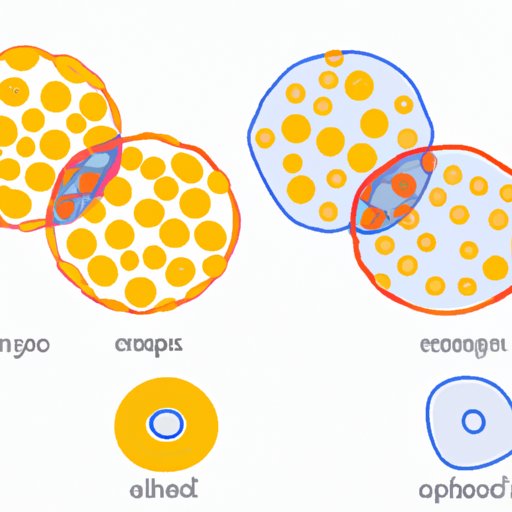Introduction
Have you ever wondered what makes up all living organisms? What gives them life? The answer lies within each and every one of us, and it’s called a cell. Cells are the building blocks of life, containing all of the necessary components for living organisms to function. In this article, we will explore the cell theory, its history, and the role that cells play in all living organisms.
An Overview of the Cell Theory: Understanding the Fundamental Unit of Life
The cell theory is a fundamental principle in biology that states that all living organisms are composed of cells, and that cells are the basic unit of life. This theory was first proposed in the mid-19th century, and has since been widely accepted as one of the foundations of modern biology.
But why is the cell theory so important? Simply put, it helps us to understand the complex processes that occur within living organisms. By studying cells, we can learn more about how living organisms function, interact with their environment, and evolve over time.
The origins of the cell theory can be traced back to the early 17th century, when the first microscopes were developed. Over time, as microscopes became more advanced and scientists were able to see more detail, they began to realize that all living organisms were composed of small, discrete units known as cells.
The Building Blocks of Life: Why the Cell is the Fundamental Unit of Life
A cell is a small, self-contained unit that can perform all of the necessary functions for life, including energy production, waste removal, and genetic replication. There are two main types of cells: prokaryotic cells, which are smaller and simpler, and eukaryotic cells, which are larger and more complex.
Cells are incredibly important to living organisms, as they allow for the specialized functions necessary for complex life. For example, muscle cells are specialized for movement, while nerve cells are specialized for communication. Without cells, complex life as we know it would simply not be possible.
From Microscopes to the Modern World: The Journey to the Discovery of Cells
The discovery of cells was a gradual process that took place over several centuries. The first microscopes, developed in the early 17th century, were basic and provided only a low level of magnification. Over time, as scientists improved the design of their microscopes and were able to see more detail, they began to realize that living organisms were composed of small, discrete units known as cells.
One of the key figures in the discovery of cells was a scientist named Robert Hooke, who observed thin slices of cork under a microscope and observed small, box-like structures that he called “cells”. Antonie van Leeuwenhoek, a Dutch scientist, later refined the microscope and was able to observe single-celled organisms such as bacteria and protozoa.
The Role of the Cell Membrane in Maintaining the Integrity of Living Organisms
The cell membrane is a thin, flexible layer that surrounds each and every cell in a living organism. Its primary function is to regulate what enters and exits the cell, while also protecting the cell from damage.
The cell membrane interacts with its environment in a number of ways. For example, it can selectively transport molecules into and out of the cell, respond to external stimuli, and allow for cell-to-cell communication. Without a strong, intact cell membrane, a cell would not be able to function properly and would be vulnerable to damage and disease.

Cells in Health and Disease: How the Cell Theory Revolutionized the Medical Field
The cell theory has revolutionized the field of medicine by allowing us to understand diseases at the cellular level. By studying how cells function and respond to various stimuli, we can gain valuable insights into the underlying causes of disease and develop new treatments and therapies.
For example, cancer is caused by uncontrolled cell growth and replication. By studying how cells multiply and divide, scientists can develop new treatments that target cancer cells specifically, without harming healthy cells.
The Future of Biotechnology: Key Advancements in Cell Research and Engineering
Biotechnology is the application of scientific and engineering principles to the processing of materials by living organisms. As our understanding of cells and how they work improves, we are able to develop new biotechnology applications that can have a wide range of implications for human health.
One area of research that is particularly promising is stem cell research, which involves using cells that have the potential to develop into any type of cell in the body. This research has the potential to revolutionize the treatment of diseases and injuries, by allowing us to replace damaged or diseased cells with healthy ones.
Conclusion
Cells are the building blocks of life, and the cell theory is a fundamental principle that helps us to understand the complex processes that occur within living organisms. From the early development of microscopes to the modern world of biotechnology, the study of cells has revolutionized our understanding of the natural world and has paved the way for countless medical advancements.
As we continue to learn more about cells and how they function, we can look forward to even more new and exciting breakthroughs in the field of biotechnology.
